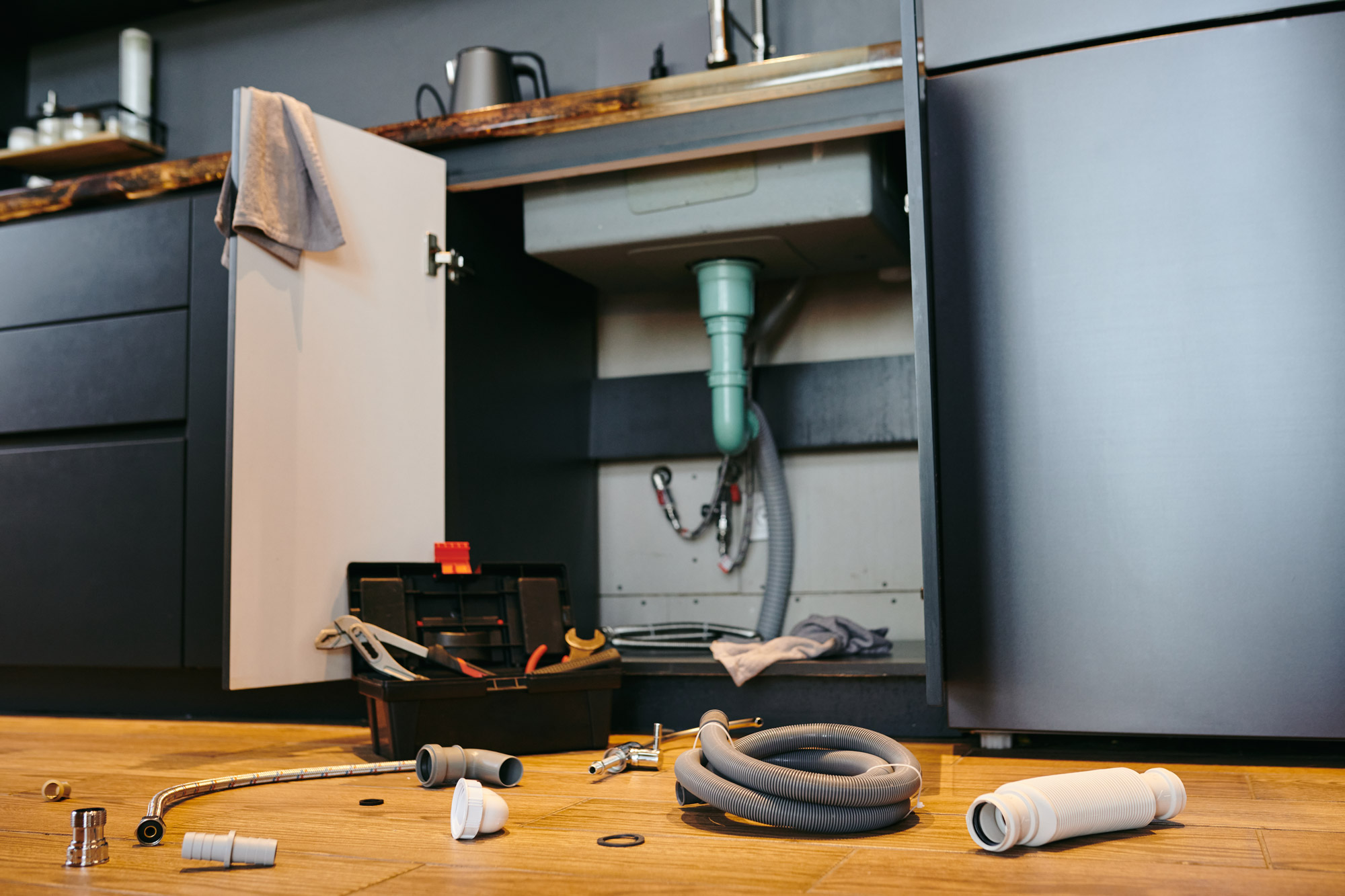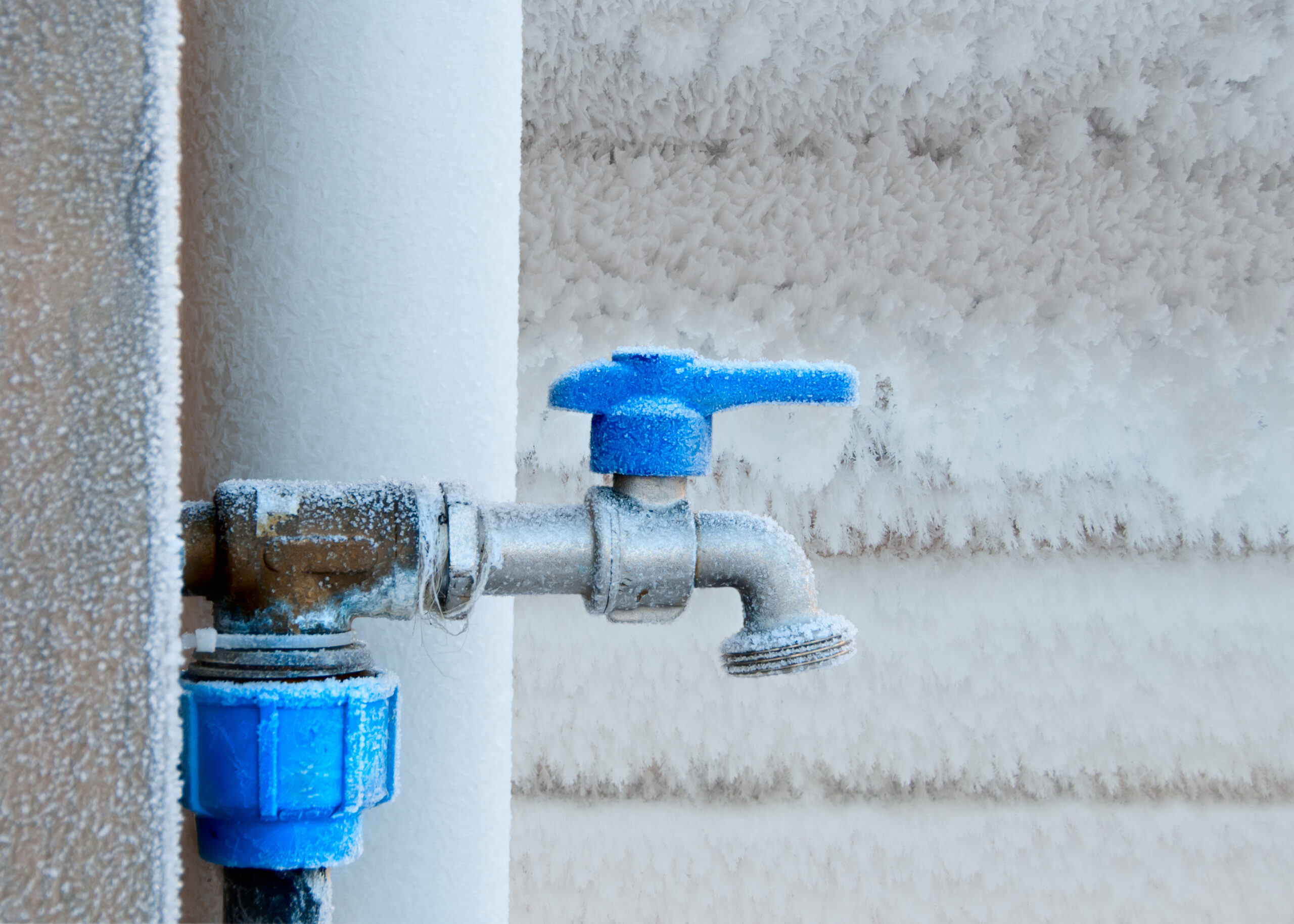Frozen pipes, at best, are a major inconvenience. At worst, they can be a catalyst for thousands of dollars in property damage! They may even force you to move out of your house for a time.
That being said, you’ll want to take action immediately to make sure that doesn’t happen!
How to Tell if Your Pipes are Frozen: Knowing the Signs
After a cold snap, one of the first signs that you’ll be able to notice right away is a lack of water flow from your plumbing fixtures (faucets, sinks, showers, or toilets). This indicates a blockage caused by ice buildup.
Where your plumbing is visible, you may be able to see if your pipes are frozen—indicated by frost-covered or bulging pipes. As you approach them, you may also hear whistling or banging noises coming from your pipes.
Foul smells from your faucets or drains may also accompany frozen pipes because the ice causes a buildup of waste.
Finally, dampness or puddles on your drywall or ceilings is a very serious indicator that your pipes have not only frozen, but burst!
Why Do Your Pipes Freeze?
Wondering why your pipes freeze? Your pipes are more susceptible to freezing if you don’t follow these proactive measures.

How To Thaw Your Frozen Pipes
To fix your frozen pipes, you will need to thaw them by doing the following:
- Turn off the water to your home. This step is critical to prevent thawed water from potentially leaking in your home or walls and causing thousands of dollars worth of water damage!
- Keep your faucets open. This will ensure that the thawed water has an outlet—and keep your pipes from bursting as they thaw.
- Locate the frozen pipe. Slowly turn on the faucets and fixtures in your home. If there are some with little or no water flow, trace along the plumbing to find the problem area. You can identify it by inspecting along the plumbing line and feeling for ice-cold, frost-covered, or even bulging areas. If none of your faucets are receiving water, the problem may have its source at the main water valve.
- Keep cabinets, closets, or doors to the plumbing OPEN. This will help your heating system work warm air into those areas and aid the thawing process.
- Apply heat to the frozen pipes. You can carefully raise the temperature of your pipes using a hair dryer, heating pad, hot towels, heat lamps, or other safe methods. Do not use anything with an open flame. (Tip: Start at the frozen area closest to the faucet so that the thawed water and steam can escape!) This process can take anywhere from 30 minutes to an hour depending on the severity of the freeze.
- Monitor the process. It is important that you keep an eye on your thawing pipes and do not leave potential fire hazards unattended.
- Turn water back on. When you’re confident that the ice blockage has thawed, you can turn your water back on and carefully test if your work is done and your water is flowing again as normal.
If you struggle with any of the steps above, call your local licensed plumber!

What to Do With A Freeze Break in Your Pipes
If you notice that your pipes have burst and are leaking,

Preventing Frozen Pipes and Burst Pipes
There are a few ways you can help prevent frozen pipes when a cold snap hits. In many cases, they involve taking proactive measures, such as:
Plumbing Solutions at Blakeslee & Son
Blakeslee & Son provides plumbing services throughout West Michigan with emergency service throughout the winter to assist you with frozen pipes.
Call us or reach out to us on our website for assistance with your plumbing and heating needs this winter.
Blakeslee & Son provides plumbing services in Rockford, Ada, Cascade, Cedar Springs, Comstock Park, Walker, Grandville, MI, and the surrounding areas in West Michigan.


